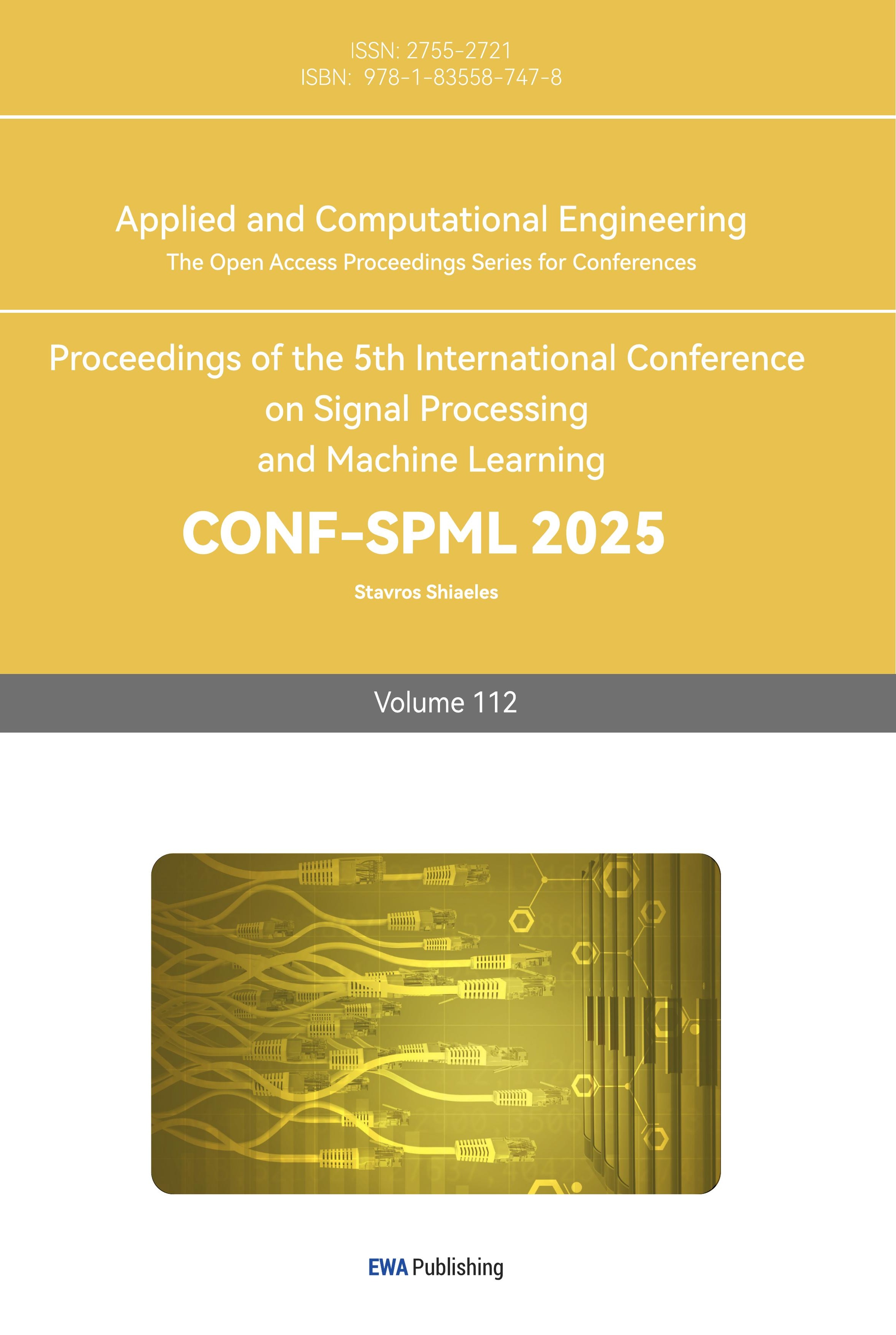1. Introduction
Currently, People's living conditions have largely increased, and society is currently undergoing rapid development. Poverty is not as prevalent as it once was. Rather, the degree of consumption has steadily increased due to the quick development of both society and technology. Among them, with the needs of people's lives, artificial intelligence is also developing rapidly. At present, the fields where artificial intelligence is applied are very extensive, including computer science, financial trade, medical, transportation, telecommunication, games, and music, etc. After the consumption level has increased, people's demand for entertainment has also increased simultaneously, thus driving the development of the game design industry chain. With the improvement of computing power and the progress of machine learning technology, the application of AI in electronic games has become more and more feasible and efficient. The complexity and scale of modern electronic games are constantly expanding, and traditional programming methods are difficult to meet the requirements. AI technology can help handle more complex game behaviors and interactions. This paper studies the development status of artificial intelligence and related fields in games over the years based on literature research.
The first publication in this field appeared in 1971. Prior to 1999, research on artificial intelligence and electronic games progressed slowly, with annual publications ranging from zero to five. However, beginning in 1998, there was a marked increase in the volume of research. Notably, from 2004 to 2006, the number of publications fluctuated significantly. In both 2012 and 2016, the publication rate doubled, reaching a maximum of 316 in 2006.The fundamental reason for the rapid growth of video games and artificial intelligence research after 2004 can be attributed to people's increasing interest in using artificial intelligence solutions to solve classic problems in video games - artificial intelligence as pathfinding, decision-making, strategy, and procedural generation [1].
This paper investigates the use of the Fine-Tuning Ring Toss Game Optimization Adaptive Artificial Neural Network (FRTGO - AANN) method for artificial intelligence in game software. First, a data set is collected for research. This study uses PCA for feature extraction. The dynamic environment of computer game creation driven by market pressure provides great potential for the integration of artificial intelligence, computational intelligence (CI), and machine learning (ML), that is, game AI. Instead of supporting results and discussion [2]. It is proved that artificial intelligence affecting games can promote social growth, improve user experience, and promote creative games.
In recent years, there have also been studies on whether artificial intelligence can be competent for certain jobs in the game field. In this literature, an experiment of an online machine learning method of the author is described. This method applies a genetic algorithm to generate different agent game ways. The latter is a player-imitating program entity, and its goal is to help players enhance cognition. The generated data will be analyzed to find the correlation between the game performance results of robots and players.
They confirmed that the proposed genetic algorithm and online machine learning method can be applied to complex participant training settings, and robots can generate various game styles [3].
Q - learning is a model-free, value-based method proposed by Watkins (1998), and it is one of the most popular reinforcement learning techniques for optimizing policies in the MDP framework. The Deep Q - Network (DQN) algorithm combines the traditional Q - learning with the powerful functions of neural networks, representing a significant progress [4]. The application of the Deep Q Network algorithm in the game field has also demonstrated its strong usability. Breakthrough progress has been made on the Atari 2600 game console, where the algorithm performance exceeded that of previous algorithms, being able to learn how to play various types of games and achieving superhuman performance.
This paper mainly studies the application and current status of generative artificial intelligence in the game field, as well as the discussion and future prospects of this technology. This paper first analyzes the background of the current development status, explores the research significance of this paper, and then lists three popular technical algorithms in the current game field according to the query data, and illustrates the recent popular electronic games implemented using these algorithms.
2. Related Algorithms and Technologies
2.1. Deep Q Network (DQN)
The Deep Q Network (DQN) is an advanced algorithm that integrates deep learning with reinforcement learning, addressing challenges in high-dimensional state spaces. As an extension of Q-learning, it employs neural networks to approximate the Q-value function. The fundamental premise of the DQN algorithm involves continuous interaction with the environment to derive a policy aimed at maximizing cumulative rewards in various states. Furthermore, the DQN is capable of managing nonlinear Q-value functions effectively.
In the DQN algorithm, the estimation of Q - values is carried out by selecting the current largest Q - value. However, when there are multiple actions with the same Q - value, the DQN algorithm will overestimate the true Q - value. [1] The Q - Learning algorithm maintains a Q - table, using a table to store the rewards obtained by taking an action a in each state s, that is, the state - value function Q(s,a), . This algorithm has great limitations. In reality, in many cases, the state space faced by reinforcement learning tasks is continuous, and there are infinitely many states, and in this case, the value function cannot be stored in a table anymore.
The DQN module is a reinforcement learning algorithm, aiming to optimize the memory allocation strategy based on immediate rewards and feedback. The architecture of DQN includes multiple layers, including an input layer, a hidden layer, and an output layer.
State Representation (St): At time t, the state representation captures the current state of the memory allocation environment.
Q - value Function (Q(St,A)): This function estimates the expected reward for a given state - action pair (St,A). The Q - value guides the selection of the best action [5].
s is the state reached by the agent after taking action a in state s. In the loss, the paper assume that the Q - value estimation is based on the selection of the best action, so the maximum state - action value of possible actions is used as the value of the next action. The gradient of the loss function is updated through the reverse propagation of weights in DQN to gradually improve the prediction of Q - values.
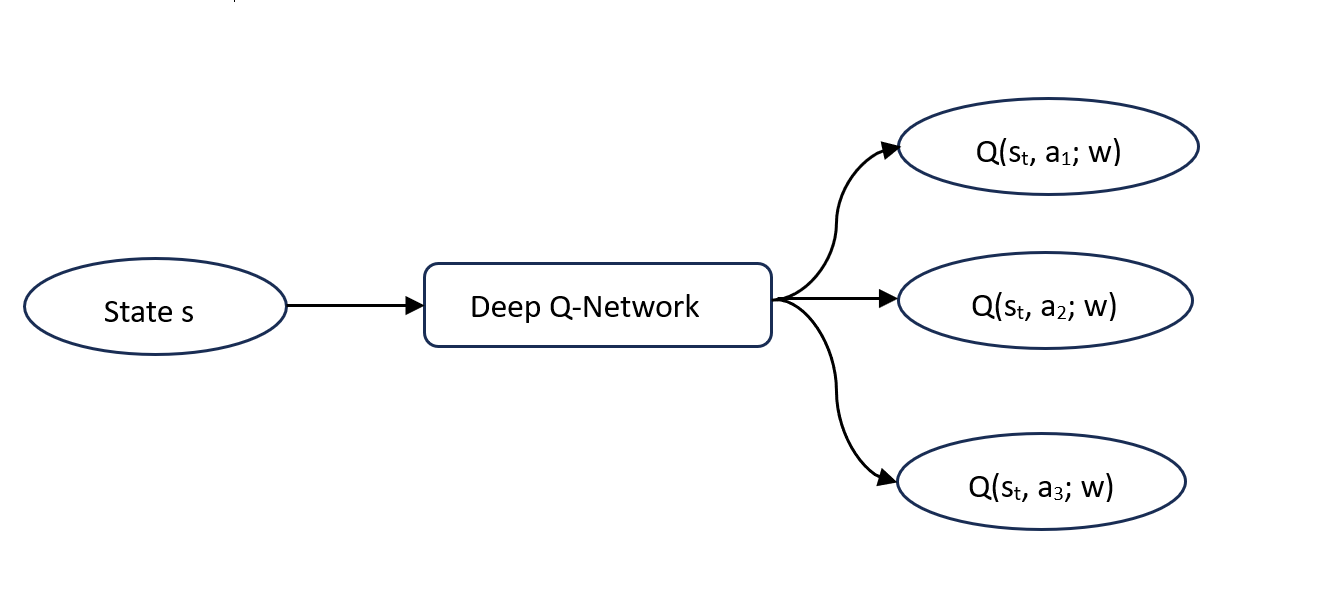
Figure 1: The values of the state actions
Figure 1 represents the values of the state actions used to compute every action that a single state could take in a single send.
The DQN mainly consists of three parts: Q network, Target network, and Experience Replay component. Among them, the Q neural network is used for training to produce the best state - action value, the Target neural network is used for calculating the Q - value corresponding to the action taken in the next state, and Experience Replay is used for interacting with the environment and generating data for training the neural network.
Game Field: Using deep reinforcement learning (DRL), initially proposed by the DeepMind group, in the "Pac - Man" game, the DQN can make the AI player reach the level of a human player.
The DQN has demonstrated impressive performance across a variety of game genres, such as shooting, boxing, and racing games. Its success highlights the promising integration of deep learning and reinforcement learning, marking a significant milestone forward in the evolution of general artificial intelligence. It still has difficulties, though, in games that call for long-term preparation.
2.2. Deep Learning Super Sampling (DLSS)
From physical and animation simulations within games, to real -time rendering; AI is revolutionizing every component of the game industry apart from broadcasts. Through something called Deep Learning Super Sampling (DLSS), NVIDIA is looking to change the game when it comes to real-time rendering with AI-based super-resolution—rendering fewer pixels and then using an AI to construct sharp, higher-resolution images. [6]. DLSS (Deep Learning Super Sampling) is an important graphics rendering technology first introduced by NVIDIA in 2018. It improves game performance and image quality through deep learning. With the rapid development of game graphics technology, game developers face the demand for higher resolution and complex scene rendering, which leads to a performance bottleneck of graphics cards when processing a large amount of image data. Traditional rendering methods can improve image quality, but usually significantly reduce the frame rate. DLSS uses a deep learning model, trained to generate high - resolution images from low - resolution images, thus effectively reducing the computational burden and increasing the frame rate.
Although the initial DLSS 1.0 version performed poorly in some scenarios, NVIDIA made significant improvements in the subsequent DLSS 2.0 and 3.0 versions, introducing more advanced image processing algorithms and enhanced image quality. These versions can provide clearer and more detailed image effects while maintaining a high frame rate. DLSS not only supports various game types, but also combines with new technologies such as real - time ray tracing, providing players with a more immersive experience. Its application range includes large open - world games, action adventure games, and competitive games, etc., and has been widely recognized by developers and players. DLSS includes the following features: frame generation, ray reconstruction, super - resolution technology, and deep learning anti - aliasing (DLAA). The success of DLSS not only improves the playability of games, but also promotes the continuous progress of graphics technology, indicating the wide application prospects of deep learning in the game industry.
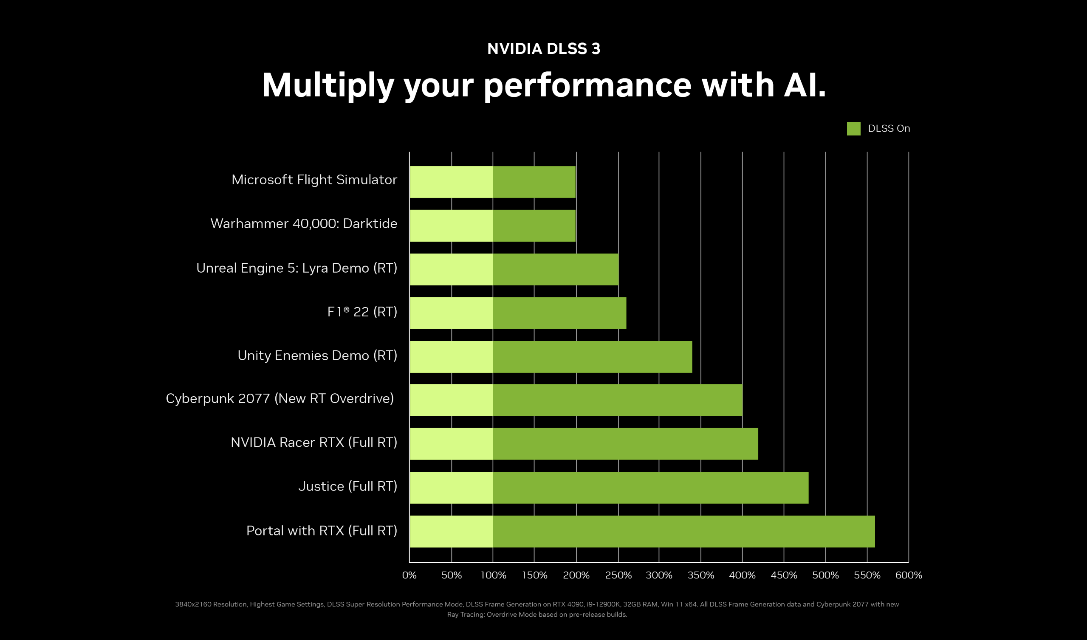
Figure 2: Schematic diagram of performance improvement of various games under the support of DLSS [7]
As shown in Figure 2, at a resolution of, with the highest game settings, on RTX4090 with DLSS frame generation, 19 - 12900k, 32GB, configuration, using the DLSS3 technology, the game performance improvement with DLSS opened is at least 1 time higher than that without DLSS in the same configuration, and the maximum can even reach 4.5 times.
2.3. NVIDIA ACE Technology
NVIDIA's ACE (AI Companions and Environments) combines advanced artificial intelligence with graphics processing capabilities to generate realistic virtual characters and environments. This enables the characters in the game to not only have a natural conversation with the player, but also dynamically adjust the storyline and environment according to the player's choices, making NPC no longer limited to pre-recorded scripts, but being able to have a meaningful interaction with the player. The player's behavior may affect the reactions of civilians and key characters, and NPC no longer just repeats the same lines over and over again.
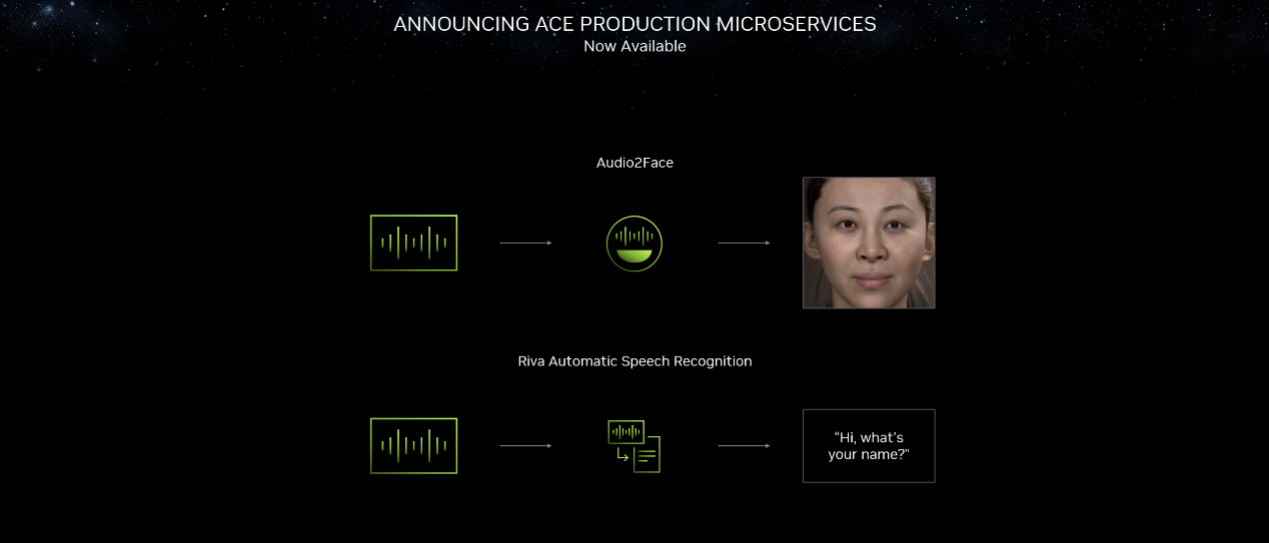
Figure 3: Schematic diagram of NVIDIA ACE technology [5]
As can be seen from Figure 3, the Riva ASR enables players to have a conversation with AI characters through a microphone without entering text. The goal of the ASR model is to enable game players to obtain an immersive effect and achieve dynamic conversation through natural and casual oral expressions. Audio2Face can generate expressive facial animations for NPC only from an audio source. A2F can not only be used for real-time generation of facial expressions and synchronization of mouth shapes, but also for offline creation of facial expressions [8].
With the development of generative artificial intelligence, ACE has the potential to change the design and experience of future games. Based on the innovation of artificial intelligence, it aims to enhance the game experience. By using deep learning and natural language processing, ACE can create more realistic and interactive virtual characters, enabling them to have a natural conversation and interaction with the player. The background of this technology stems from NVIDIA's long-term research in graphics processing and AI fields, aiming to bring a more immersive and emotionally connected game world to players through advanced computing power and algorithms.
3. Typical Applications
3.1. Black Myth: Wukong
On August 20, 2024, a domestic 3A game named Black Myth: Wukong was released on various game platforms. This game masterpiece sold more than 12 million copies on the Steam platform on the first week after its release, with a total revenue of $6.7 billion. This is unimaginable for a single - player game developed in China. Its advanced generative artificial intelligence technology has brought a more immersive experience to players. Generative Adversarial Networks (GAN) are used to create high - quality character models and environmental details, and procedural generation techniques are used to dynamically generate terrain and tasks, which are particularly important in game design. By analyzing a large amount of image data, GAN can generate high - quality textures and facial features, making the characters look more real and vivid. In addition, GAN is also used to generate diverse terrains and backgrounds, enhancing the visual depth of the game world.
In addition, the emergence of AI has completely changed the behavior modeling of NPC. The reinforcement learning of NPC in games enables them to make decisions based on the perceived information, thus producing more dynamic and unpredictable behaviors, which will change the difficulty of some levels. Among them, AI technology is also integrated into the behavior modeling of NPC, which includes using natural language processing (NLP) to create NPC that can have a meaningful conversation with the player. In addition, an emotional modeling and personality system are integrated together to create NPC with credible emotional reactions and unique personalities [9]. Figure 4 shows the cover of the Black Mythical Wukong game.

Figure 4: Black Myth Wukong Game Cover
3.2. Cyberpunk 2077
Cyberpunk 2077 is set in a fictional city named "Night City" in the future. This city is full of highly developed technology and extreme social inequality, with huge enterprises controlling everything and the streets filled with gangs, crime, and poverty. This game supports NVIDIA's DLSS (Deep Learning Super Sampling) technology, which can significantly improve the game performance and image quality. By rendering images at a lower resolution, NVIDIA DLSS can generate a clear effect close to 4K, thus increasing the frame rate and reducing the pressure on the GPU. This enables players to enjoy a smooth game experience even when setting high image quality, especially when turning on the ray tracing effect. As of now, this game now supports NVIDIA DLSS3, it takes advantage of the light flow field in addition to using two consecutive frames and motion vectors. The light flow field refers to the movement speed and direction recorded when a single pixel moves from one frame to another. This can better predict the third intermediate frame and can bring a significant effect on increasing the frame rate, making the exploration of Night City more vivid and real [10].
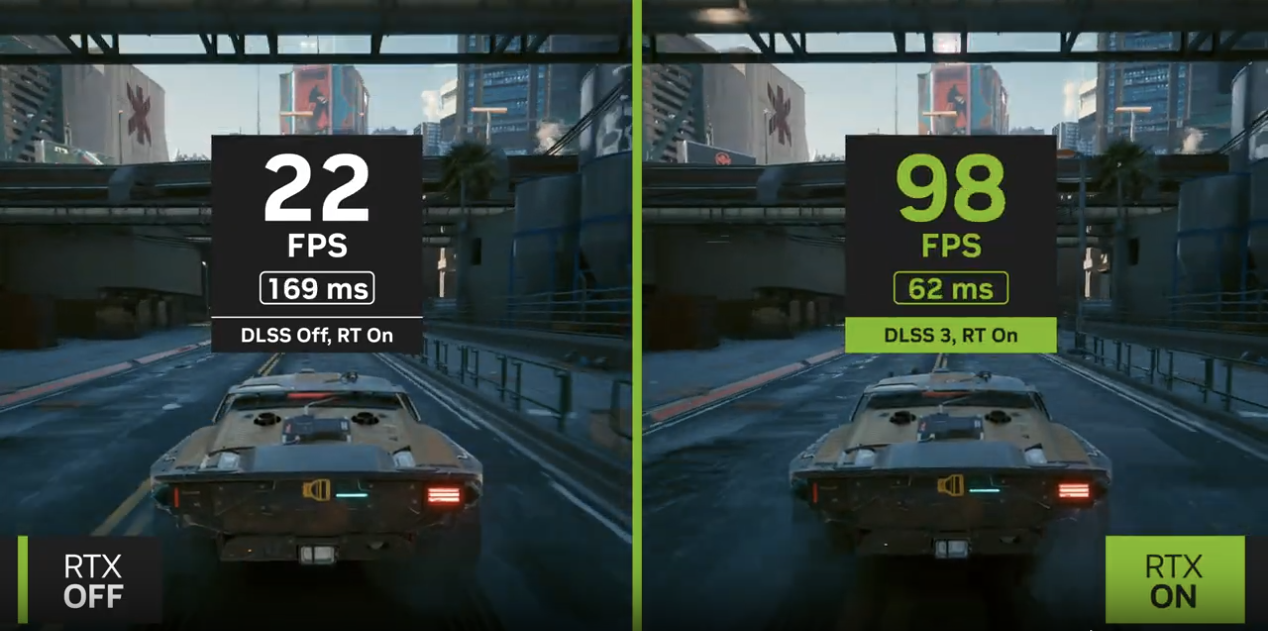
Figure 5: Comparison of Before and After the Use of DLSS Technology in Cyberpunk 2077.[5]
As shown in Figure 5, in the Cyberpunk 2077 game scene, using the DLSS 3 technology can increase the performance and response speed to 4 times and 2 times of the native rendering respectively, and will not reduce the excellent image quality at all [11].
3.3. Call of Duty
Call of Duty is a series of classic first - person shooting games, first released in 2003, initially focusing on World War II and later expanding to modern and future battlefields. In its single - player storyline mode, players play various roles and cooperate with NPC to complete corresponding tasks. Game designers use motion capture technology to bring a more immersive experience to players, and even invited the SEAL to perform actions. In order to accurately capture the movement trajectories of athletes, this research uses artificial intelligence deep learning technology. Sensors such as cameras can be mounted on the platform and used to capture how players move in real-time. And the labeled data on which this deep learning algorithm facilitates rapid and accurate investigation into, in relation to an athlete's movement posture, speed (along with various other measures) are then inputted. Utilizing an artificial intelligence algorithm, the acquired athlete movement data is processed and refined — operationally optimized resulting in real-time interactivity between athletes & their virtual surroundings[9]. When players play the game, NPC will perform a series of behaviors that are helpful to the player's ideas and actions, which helps to improve the player's experience. In the past, NPC were usually in a non - life - saving state and often blocked the player's gun muzzle. But now, through this technology - learned AI, NPC have become smarter, such as checking whether there is danger in the corner before entering a corresponding room.
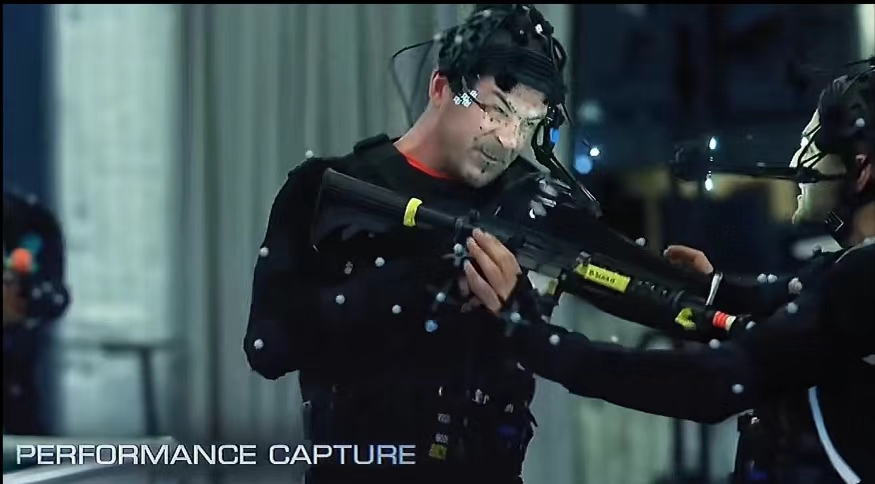
Figure 6: Scene where a real person wears a sensor and uses motion capture technology.

Figure 7: Scene displayed through motion capture technology in the game
As shown in Figures 6 and 7, real people wearing sensors in reality perform actions through motion capture technology and then transport the data to the virtual NPC in the game. The movement and expression data of the two are almost exactly the same.
4. Challenges In the future
There will also be some potential challenges in the application of generative artificial intelligence in these fields. Developing a high - level artificial intelligence system requires a large amount of technical investment and development time, which may be unfavorable for the development of small development teams. If the input cost is not proportional to the return, it will be a major blow. However, if a large company monopolizes it, it is also not conducive to the development of the field. Although generative artificial intelligence technology is constantly progressing, in complex game environments, it still faces technical bottlenecks such as computing power and real - time response. And some technologies also depend on hardware support. If the appropriate hardware conditions cannot be provided, it will also limit the development of the field. However, the reaction of the game development community to generative artificial intelligence is changing. Although some people expect it to accelerate the development process and increase creativity, others express concerns about potential unemployment and the impact of legal artificial intelligence - generated content. Generative artificial intelligence extracts seemingly original content from a large data set, but poses challenges in tracking copyright materials. In some cases, the decisions of artificial intelligence may raise moral controversies. In this era of big data, how to correctly handle players' personal data and privacy and give players a personalized experience without infringing on personal privacy is a problem. The generative artificial intelligence industry in game development is indeed complex and multifaceted. The application of generative artificial intelligence in the game field can not only completely change the game design development process but also deeply affect the roles of creative professionals, especially traditional artists. Therefore, it is most important to recognize that even with the internal value of generative artificial intelligence content creation, human creativity, artistry, and emotional game art and design are still irreplaceable. Therefore, there is an urgent need to take action to move away from the simple concept of "replacing" existing jobs and instead focus on cultivating the possibilities of interaction and cooperation between generative artificial intelligence and human artists. In addition, generative artificial intelligence technology affects programming and technical roles and may also limit the opportunities for junior students.
5. Conclusions
This paper elaborates on the contemporary developmental status of generative artificial intelligence and its implementation within the gaming realm. Although this paper lists three popular related algorithms this year and investigates their applications in the game field, providing more convenient optimization tools for game designers and a more immersive experience for game players. This paper also concludes that although generative artificial intelligence is gradually becoming popular, it still has deficiencies. In complex game environments, it still faces technical bottlenecks such as computing power and real - time response and needs to be continuously improved in the future. However, overall, generative artificial intelligence has greatly promoted the development of the game field. In the future, there is still a large space and challenges for generating artificial intelligence in the game field. The paper also believes that the development of generative artificial intelligence will become an indispensable part of the game field.
Authors Contribution
All the authors contributed equally and their names were listed in alphabetical order.
References
[1]. João, P. S., Rogério, T., João, P. G., Vitor, M. (2022). Review and analysis of research on Video Games and Artificial Intelligence: a look back and a step forward, Procedia ComputerScience, Volume204, Pages315-323, ISSN1877-0509, https://doi.org/1 0.1016/j.procs.2022.08.038.
[2]. Kailash, K. N., Veena, T. A., Chandradeep, B., Uma, K., Parita, J. (2024). Game-changing intelligence: Unveiling the societal impact of artificial intelligence in game software, EntertainmentComputing, Volume52, 100862, ISSN1875-9521, https://doi.org/10.1016 /j.entcom.2024.100862.
[3]. Tsochev, G., Ukov, T., Rusev, A., Sharabov, M. (2024). Insights into Applying Artificial Intelligence Methods in Action Video Games for Enhancement of Psychomotor Skills. Eng. Proc. 70, 50. https://doi.org/10.3390/engproc2024070050
[4]. Mnih, V., Kavukcuoglu, K., Silver, D., Graves, A., Antonoglou, I., Wierstra, D., Riedmiller, M. (2015). Playing Atari with deep reinforcement learning. arXiv:1312.5602. [Google Scholar]
[5]. Naveen Kumar, N., Saravana, S. Balamurugan, S., Seshu Kumar, P., Suresh, S. (2024). Optimized memory allocation in edge-PLCs using Deep Q-Networks and bidirectional LSTM with Quantum Genetic Algorithm, e-Prime - Advances in Electrical Engineering, Electronics and Energy, Volume 10, 2024, 100762, ISSN 2772-6711, https://doi.org/10.1016/j.prime.2024.1 00762
[6]. NVIDIA DLSS 2.0: A Big Leap In AI Rendering https://www.nvidia.com/en-us/geforce/news/nvidia-dlss-2-0-a-big-leap-in-ai-rendering/ Retrieved October 15, 2024
[7]. NVIDIA DLSS 3:AI can double the performance and increase frame rates by up to 4 times. https://www.nvidia.cn/geforce/news/dlss3-ai-powered-neural-graphics-innovations/ Retrieved October 15, 2024
[8]. NVIDIA and developers pioneer the use of NVIDIA ACE to create realistic virtual characters for games and applications. https://www.nvidia.cn/geforce/news/nvidia-ace-architecture-ai-npc-personalities/ Retrieved October 15, 2024
[9]. Chen, S. (2024). Literature review of the application of AI in improving gaming experience: NPC behavior and dynamic difficulty adjustment. https: //urn.fi/URN:NBN:fi-fe2024061352011
[10]. Mengistu, B. (2023). Deep-Learning Realtime Upsampling Techniques in Video Games. Scholarly Horizons: University of Minnesota, Morris Undergraduate Journal, Volume 10, ISSN: 2576-2176, https://doi.org/10.61366/2576-2176.1127
[11]. Li, Z. L., Wang, L. T., Wu, X. Q. (2024). Artificial intelligence based virtual gaming experience for sports training and simulation of human motion trajectory capture, Entertainment Computing, Volume52, 100828, ISSN1875-9521, https://doi.org/10.1016/j.entcom.2024. 100828.
Cite this article
Lu,J.;Wang,J. (2024). Research on the Application of Generative Artificial Intelligence in the Video Game Field. Applied and Computational Engineering,112,194-203.
Data availability
The datasets used and/or analyzed during the current study will be available from the authors upon reasonable request.
Disclaimer/Publisher's Note
The statements, opinions and data contained in all publications are solely those of the individual author(s) and contributor(s) and not of EWA Publishing and/or the editor(s). EWA Publishing and/or the editor(s) disclaim responsibility for any injury to people or property resulting from any ideas, methods, instructions or products referred to in the content.
About volume
Volume title: Proceedings of the 5th International Conference on Signal Processing and Machine Learning
© 2024 by the author(s). Licensee EWA Publishing, Oxford, UK. This article is an open access article distributed under the terms and
conditions of the Creative Commons Attribution (CC BY) license. Authors who
publish this series agree to the following terms:
1. Authors retain copyright and grant the series right of first publication with the work simultaneously licensed under a Creative Commons
Attribution License that allows others to share the work with an acknowledgment of the work's authorship and initial publication in this
series.
2. Authors are able to enter into separate, additional contractual arrangements for the non-exclusive distribution of the series's published
version of the work (e.g., post it to an institutional repository or publish it in a book), with an acknowledgment of its initial
publication in this series.
3. Authors are permitted and encouraged to post their work online (e.g., in institutional repositories or on their website) prior to and
during the submission process, as it can lead to productive exchanges, as well as earlier and greater citation of published work (See
Open access policy for details).
References
[1]. João, P. S., Rogério, T., João, P. G., Vitor, M. (2022). Review and analysis of research on Video Games and Artificial Intelligence: a look back and a step forward, Procedia ComputerScience, Volume204, Pages315-323, ISSN1877-0509, https://doi.org/1 0.1016/j.procs.2022.08.038.
[2]. Kailash, K. N., Veena, T. A., Chandradeep, B., Uma, K., Parita, J. (2024). Game-changing intelligence: Unveiling the societal impact of artificial intelligence in game software, EntertainmentComputing, Volume52, 100862, ISSN1875-9521, https://doi.org/10.1016 /j.entcom.2024.100862.
[3]. Tsochev, G., Ukov, T., Rusev, A., Sharabov, M. (2024). Insights into Applying Artificial Intelligence Methods in Action Video Games for Enhancement of Psychomotor Skills. Eng. Proc. 70, 50. https://doi.org/10.3390/engproc2024070050
[4]. Mnih, V., Kavukcuoglu, K., Silver, D., Graves, A., Antonoglou, I., Wierstra, D., Riedmiller, M. (2015). Playing Atari with deep reinforcement learning. arXiv:1312.5602. [Google Scholar]
[5]. Naveen Kumar, N., Saravana, S. Balamurugan, S., Seshu Kumar, P., Suresh, S. (2024). Optimized memory allocation in edge-PLCs using Deep Q-Networks and bidirectional LSTM with Quantum Genetic Algorithm, e-Prime - Advances in Electrical Engineering, Electronics and Energy, Volume 10, 2024, 100762, ISSN 2772-6711, https://doi.org/10.1016/j.prime.2024.1 00762
[6]. NVIDIA DLSS 2.0: A Big Leap In AI Rendering https://www.nvidia.com/en-us/geforce/news/nvidia-dlss-2-0-a-big-leap-in-ai-rendering/ Retrieved October 15, 2024
[7]. NVIDIA DLSS 3:AI can double the performance and increase frame rates by up to 4 times. https://www.nvidia.cn/geforce/news/dlss3-ai-powered-neural-graphics-innovations/ Retrieved October 15, 2024
[8]. NVIDIA and developers pioneer the use of NVIDIA ACE to create realistic virtual characters for games and applications. https://www.nvidia.cn/geforce/news/nvidia-ace-architecture-ai-npc-personalities/ Retrieved October 15, 2024
[9]. Chen, S. (2024). Literature review of the application of AI in improving gaming experience: NPC behavior and dynamic difficulty adjustment. https: //urn.fi/URN:NBN:fi-fe2024061352011
[10]. Mengistu, B. (2023). Deep-Learning Realtime Upsampling Techniques in Video Games. Scholarly Horizons: University of Minnesota, Morris Undergraduate Journal, Volume 10, ISSN: 2576-2176, https://doi.org/10.61366/2576-2176.1127
[11]. Li, Z. L., Wang, L. T., Wu, X. Q. (2024). Artificial intelligence based virtual gaming experience for sports training and simulation of human motion trajectory capture, Entertainment Computing, Volume52, 100828, ISSN1875-9521, https://doi.org/10.1016/j.entcom.2024. 100828.





